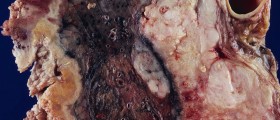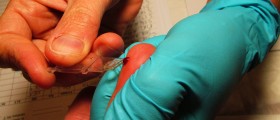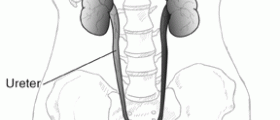
The peritoneal cavity is lined with the peritoneum, the serous membrane. This membrane is made of two layers, the parietal peritoneum and the visceral peritoneum. The parietal peritoneum is attached to the abdominal wall while the visceral peritoneum covers the internal organs. The space between these two layers is medically known as the peritoneal cavity. Peritoneal fluid is a liquid normally found in the peritoneal cavity. This fluid lubricates the membranes and allows sliding of the layers reducing the friction between the two layers.
Peritoneal Fluid Analysis
There are certain indications when samples of peritoneal fluid are taken and studied. Peritoneal fluid analysis is performed to determine the exact cause of the fluid accumulation in the abdomen, to detect potential internal bleeding due to abdominal injury and to confirm peritonitis. This procedure is also performed to remove large amounts of fluid from the peritoneal cavity in people suffering from liver disease.
Prior the very procedure the patients are due to report allergies to any medication and to name all the drugs they are currently taking. Furthermore, it is essential to inform doctor if the person is suffering from certain medical conditions. The samples of the peritoneal fluid are taken from the peritoneal cavity with a needle and syringe. Prior insertion of a needle a specific area of the abdomen is cleaned and numbed. The fluid is collected into a tube attached to the needle or into a syringe. The samples are sent to a lab and examined. The procedure does not carry serious risks. It is basically performed by well experienced doctors. In extreme cases there is a chance of puncture of the bowel, bladder or some blood vessels in the abdomen which may cause infections and bleeding. However, these complications rarely occur.
Interpretation of the Results
Peritoneal fluid is normally sterile. In case of certain conditions the composition of the peritoneal fluid changes. The changes are connected to fluid cell count and the presence or absence of certain chemical compounds (proteins, albumin, glucose, ammonia, amylase, alkaline phosphatase etc) and their level. The presence of bacteria or fungi points to an infection in the peritoneal cavity. If there is blood in the peritoneal fluid it points to internal bleeding due to trauma or intra-abdominal tumor. The very color of the fluid changes according to the presence of certain substances and cells. Once the analysis is performed and the results obtained they are used in further diagnosis of the underlying condition. It is essential to estimate the origin of the infection, the primary site of tumors etc, and start the treatment as soon as possible. The collection of peritoneal fluid is not a condition per se but is represents a sign of other conditions and is rather useful in setting of the definitive diagnosis.

















Your thoughts on this
Loading...